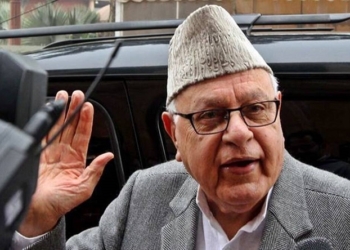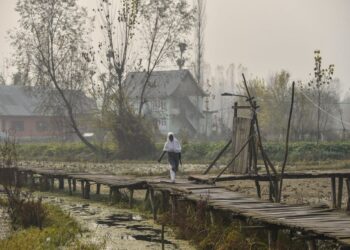In July this year, when Gen Abdel Fattah el-Sisi overthrew the Govt of President Morsi in Egypt, in a bloody coup, it was quite evident that the Arab Spring, which began in 2011 and was supposed to replace the undemocratic Govts which rule most parts of Arab Muslim world, and usher in a new era of participatory politics, had withered faster than even its ardent opponents would have hoped for. Though no such coup took place in Tunisia, where Arab Spring took birth, the political situation there is not as rosy as one would have liked.
The initial euphoria following the Arab Spring has given way to desperation and hopelessness. Egypt is back to its old days when it was ruled by military dictators. In a way, this hopelessness that one witnesses around the events in Egypt this year has been a continuing theme throughout most Muslim and Arab world. Barring a few Muslim countries, both Arab and Non-Arab, there are very few Muslim majority countries where there is any rule of law or where the people have been given any democratic rights. Most of these countries are being ruled either by dictators or monarchs. Countries in the Gulf region like Saudi Arabia, UAE, Qatar etc are being ruled by monarchs for decades now. All these monarchies have always used Islam as an excuse to continue to rule these countries without giving any freedoms like the freedom of expression, speech etc to people. In Saudi Arabia, the Govt has gone even to the extent of denying the women the right to drive. As the Govts in these countries continue to brutalize their people and deny them basic rights, voices of dissent have slowly started to emerge. With the world becoming a global village and with technology and communication changing the landscape of the world, people are finding newer, better and more innovative ways of registering their protest and creating new movements against these brutal regimes. The social media played a very important part in mobilizing people, both in Tunisia and Egypt during Arab Spring.
The tragedy of most Muslim countries is that the Govts in these countries have been the preserve of just a few people. People being ruled under such Govts are hardly left with any choices. Free speech and any criticism of these regimes, even mild is dealt with severely. In countries like Saudi Arabia, Qatar etc, there is apparent peace, but it is no more than the silence of the graveyard. In countries like Pakistan and Afghanistan, the issues are different. Pakistan, which is an important Muslim country, has recently seen a democratic transition for the first time in its history. But despite that, the problems of terrorist and sectarian violence, being witnessed by that country have taken its toll. With thousands of deaths at the hands of extremists, the country is a long distance away from any semblance of normalcy. Afghanistan has been in the throes of a war since late 1970s. Firstly it was the war against the occupying Russian Army, followed by in-fighting between the various Mujahideen factions. Though there is the Govt of Ahmad Karzai in Kabul now, it does’nt wield control over the entire country and with the imminent withdrawal of US forces from Afghanistan, more violence may be in the offing.
It seems the only options available in most Muslim countries are either tyranny or anarchy. The bigger tragedy is that Islam is used, by both the camps to justify their actions and existence. Given that the population of most Muslim countries is young, who are frustrated by rising unemployment, corruption and lack of freedom, it seems inevitable that the restlessness will only grow which will keep these countries on the boil for a long time to come.
Follow this link to join our WhatsApp group: Join Now
Be Part of Quality Journalism |
Quality journalism takes a lot of time, money and hard work to produce and despite all the hardships we still do it. Our reporters and editors are working overtime in Kashmir and beyond to cover what you care about, break big stories, and expose injustices that can change lives. Today more people are reading Kashmir Observer than ever, but only a handful are paying while advertising revenues are falling fast. |
| ACT NOW |
| MONTHLY | Rs 100 | |
| YEARLY | Rs 1000 | |
| LIFETIME | Rs 10000 | |









